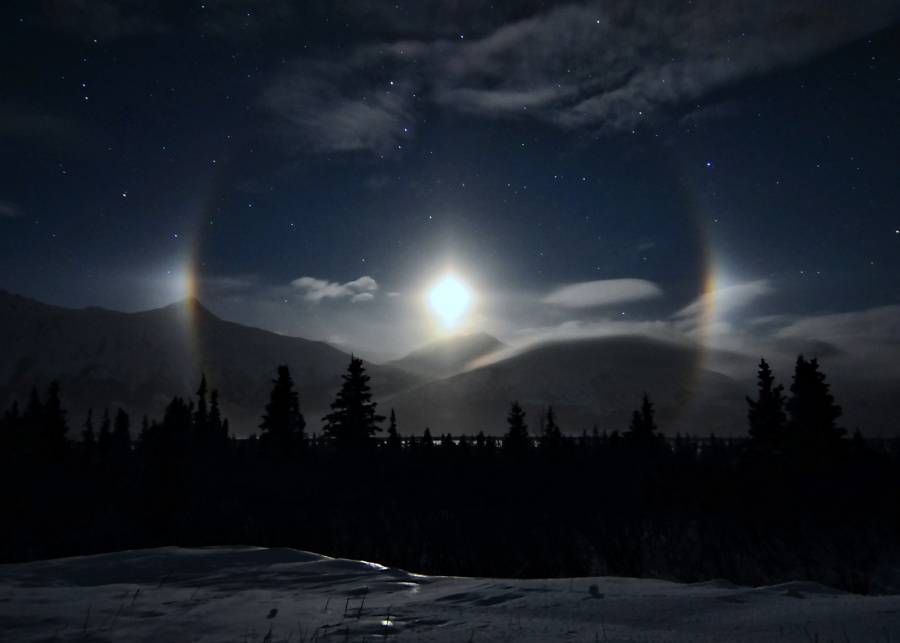In addition to ham radio I am also interested in Astronomy. During some our recent astronomy club meetings and outings I have noticed that there are a large number of astronomy enthusiasts that are also hams. Maybe that means that the two hobbies attract the same sorts participants; those with an interest in technical things. I think the same was true during the early days of the personal computer revolution.
Anyway, for you hams that are also interested in Astronomy, here is a great link to bookmark. The NASA photo of the day is a good way to start the morning along with your cup of joe and a quick peek at the DX Spotting Network.
http://apod.nasa.gov/apod/astropix.html
Here is todays photo:

Alaskan Moondogs
Image Credit & Copyright: Sebastian Saarloos
Explanation: Moonlight illuminates a snowy scene in this night land and skyscape made on January 17 from Lower Miller Creek, Alaska, USA. Overexposed near the mountainous western horizon is the first quarter Moon itself, surrounded by an icy halo and flanked left and right by moondogs. Sometimes called mock moons, a more scientific name for the luminous apparations is paraselenae (plural). Analogous to a sundog or parhelion, a paraselene is produced by moonlight refracted through thin, hexagonal, plate-shaped ice crystals in high cirrus clouds. As determined by the crystal geometry, paraselenae are seen at an angle of 22 degrees or more from the Moon. Compared to the bright lunar disk, paraselenae are faint and easier to spot when the Moon is low.
